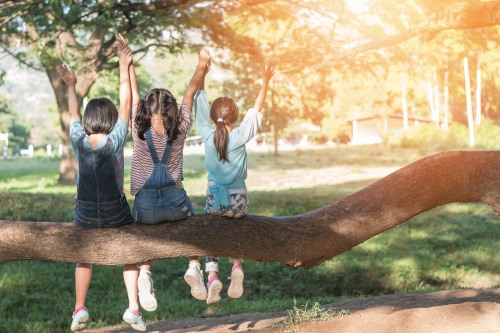Some moments in life are unforgettable. For me, the experience of evacuating from New Orleans during Hurricane Katrina with my two young children and pup is one of those moments. Katrina became a marker in the life of our family. We used to talk about the timeline of our experiences in terms of “before Katrina” or “after Katrina.” While our home only sustained significant wind damage but no flooding, we witnessed firsthand the considerable tragedy across the city.
My husband is a Coast Guard pilot and was part of the rescue efforts immediately after the storm. As a young mother and teacher, I was focused on setting up a temporary home in San Antonio, TX. I had very little information on how long we would be living in Texas, whether my house was destroyed, what would happen to my teaching job and salary, and how long I would be apart from my husband. The uncertainty combined with the sudden nature of the disaster was, at times, almost too much to bear. I spent hours watching the news showing pictures of people on roofs trying to survive the flooding and the helicopters bravely swarming the airspace to save as many people as possible.
After two months, in October, we were able to return to the city once electricity was restored to our area on the west side of the river. Imagine a home in the deep heat of a New Orleans summer, closed, with no electricity or air conditioning. Imagine a refrigerator and freezer in that house with food left behind. Imagine thousands of those! Imagine wind and water damage and destroyed backyards, sheds, patios, and plants. We returned to that scene, and we were by far one of the lucky ones! We focused on cleaning out our home for several weeks, installing a blue FEMA tarp over a damaged roof, burning the left-behind branches and fallen trees in our yard, and attempting to find food and water. We were grateful for organizations that sent volunteers to cook, assisted with cutting down trees, and did various other tasks.
Through the experiences of Katrina and the subsequent return to school, I learned how essential community and belonging are in our human experience. Healing from trauma requires relationships and grace. Our society does not always prioritize the humanity in each of us, and we must learn to renew our focus on these key needs as we enter school this fall.
Back to school
Later in October, our local charter school determined they were ready to open back up. I remember arriving as a teacher that day in the gym, gathering for the first time to learn how this new opening would take place. I remember the six children who arrived with eager faces, ready to try to find normalcy—only to find a relatively empty school and so many of their friends missing from their seats. I remember my own children as they felt both happy to be back at home and sad that so many friends did not return. The aftermath of Katrina was devastating, and it impacted everything. The instability that many children and adults felt was significant.
- 6 benefits of immersive learning with the metaverse - March 14, 2023
- 4 Practices for Innovative School Leaders - August 24, 2022
- Building a Successful Certification Program at Your Institution - August 22, 2022

